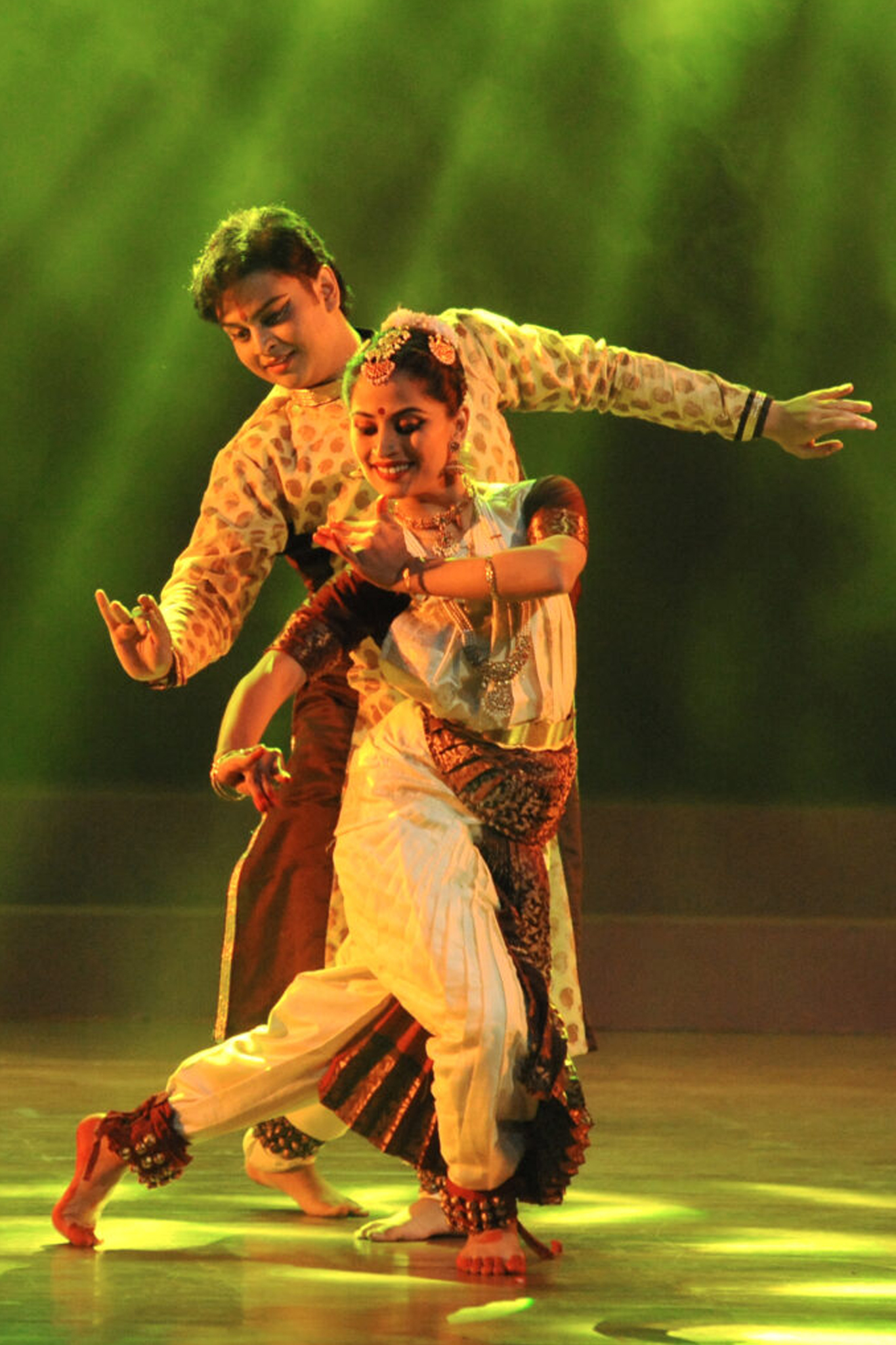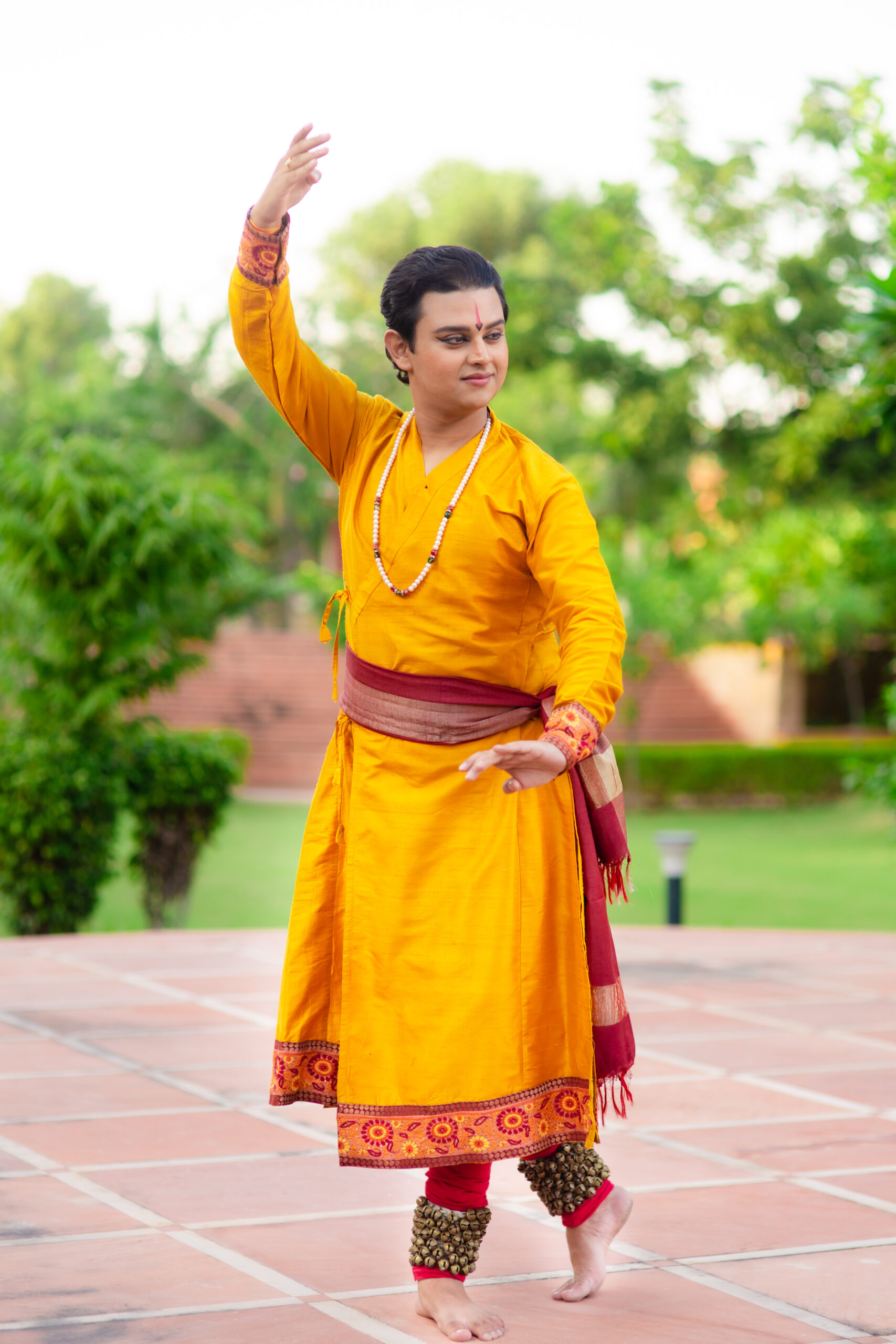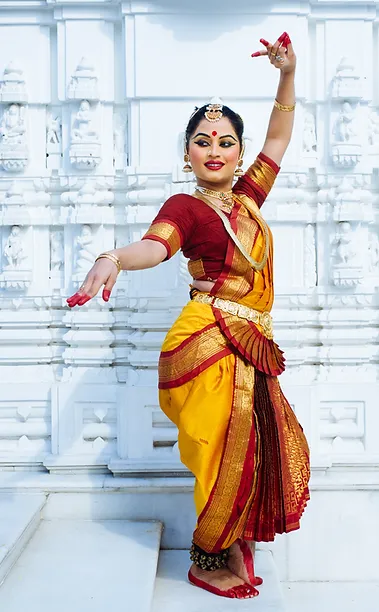KathakNatyam
(Academy Of Dance)
Being two contrasting dance forms, Kathak and Bharatanatyam have their basic roots from one source, the ‘Natya Shastra’. It is a Sanskrit text on the performing arts attributed to sage Bharata Muni which consists of 36 chapters with a cumulative total of 6000 poetic verses describing performing arts. The subjects covered by the treatise include dramatic composition, the structure of a play and the construction of a stage to host it, genres of acting, body movements, make-up and costumes, role and goals of an art director, the musical scales, musical instruments and the integration of music with art performance. The Natya Shastra is notable as an ancient encyclopedic treatise on the arts, one which has influenced dance, music and literary traditions in India. It is also notable for its aesthetic ‘Rasa’ theory, which asserts that entertainment is the desired effect of performance arts but not the primary goal and that the primary goal is to transport the individual in the audience into another parallel reality, full of wonder, where he experiences the essence of his own consciousness, and reflects on spiritual and moral questions.
The fused dance form reflects its forte by the means of similarities and differences in hand gestures, footwork, facial expressions, body linings, costume design and make-up application while illustrating a specific extract from mythology, fictitious storyline or pure technical presentation. It is a spectacle to witness the music composition and dance choreography based on KathakNatyam take its form and display the ancient heritage in a new persona. The dance form will revolve around the contrast between north and south Indian society, their development and how Kathak and Bharatanatyam have been nurtured over the years of its presence.


Kathak
The origin of Kathak is traditionally attributed to the travelling bards of ancient northern India known as ‘Kathakars’ or storytellers. The term Kathak is derived from the Vedic Sanskrit word Katha which means “story”, and Kathakar which means “the one who tells a story”. Kathakars communicated stories from the great epics and ancient mythology through dance, songs, music, rhythmic footwork, hand gestures and facial expressions. Kathak evolved during the Bhakti movement, particularly by staging stories of Lord Krishna and Lord Shiva, as well as independently in the courts of north Indian kingdoms. The dance incorporates three aspects ‘Nritta’, the pure technical variation, ‘Nritya’, the infusion of ‘bhav’ and ‘Natya’, the drama which introduces dialogues and theatre to the dance form. Kathak has been categorised into three eras during its evolution. ‘Mandir Kaal’, where Kathakars sang and danced to devotional stories from Hindu mythology, ‘Mughal Kaal’, where it became an eminent part of the royal courts of northern India and ‘Rangmanch Kaal’, which spans from the upheaval of Kathak after British Raj to the present. The dance form paved its way into the modern world via evolution with its ancient norms and discipline following the Guru-Shishya Parampara.
Bharatanatyam
According to the Hindu tradition the name ‘BHARATANATYAM’ was derived by joining two words, ‘Bharata’ and Natyam’ where ‘Natyam in Sanskrit means dance and ‘Bharata’ is a mnemonic comprising ‘BHA’, ‘RA’ and ‘ta’ which respectively means ‘bhava’ that is emotion and feelings; ‘raga’ that is melody; and ‘tala’ that is rhythm. Thus, traditionally the word refers to a dance form where bhava, raga and tala are expressed. The theoretical base of this dance form, which is also referred as Sadir, trace back to ancient Indian theatrologist and musicologist, Bharata Muni’s Sanskrit Hindu text on the performing arts called ‘Natya Shastra’. The text’s first complete version was presumably completed between 200 BCE to 200 CE, however such timeframe also varies between 500 BCE and 500 CE. According to legends Lord Brahma revealed Bharatanatyam to the sage Bharata who then encoded this holy dance form in Natya Shastra. The text that consists of thousands of verses structured in different chapters divides dance in two specific forms, namely ‘nritta’ that is pure dance comprising of finesse of hand movements and gestures, and ‘nritya’ that is solo expressive dance that comprises of expressions.

